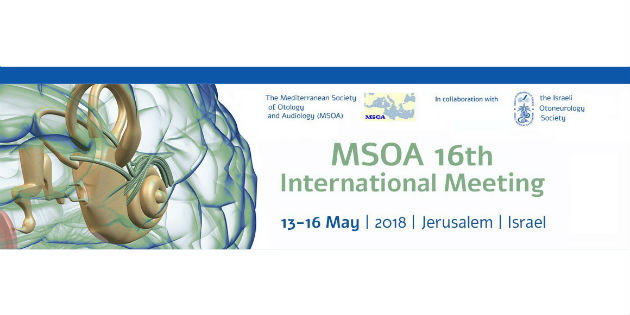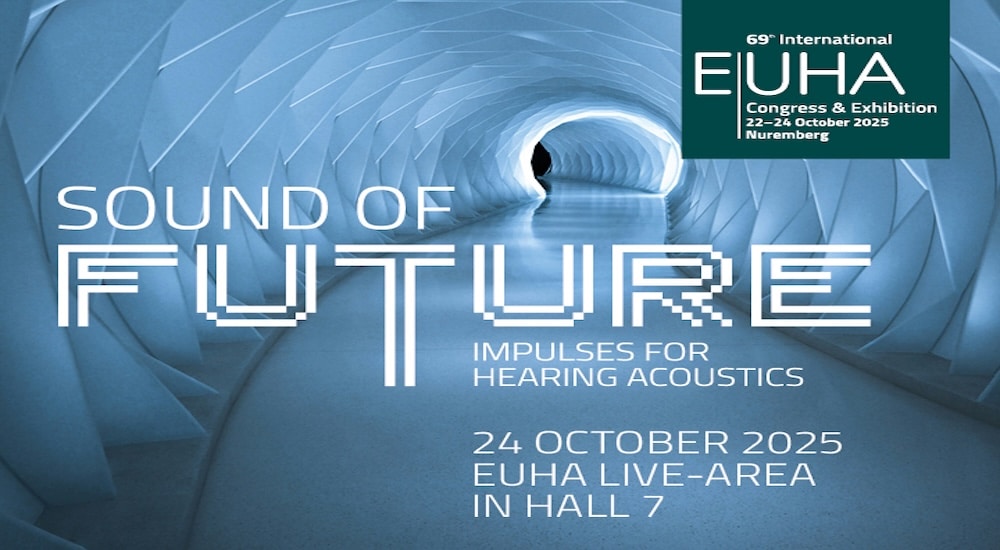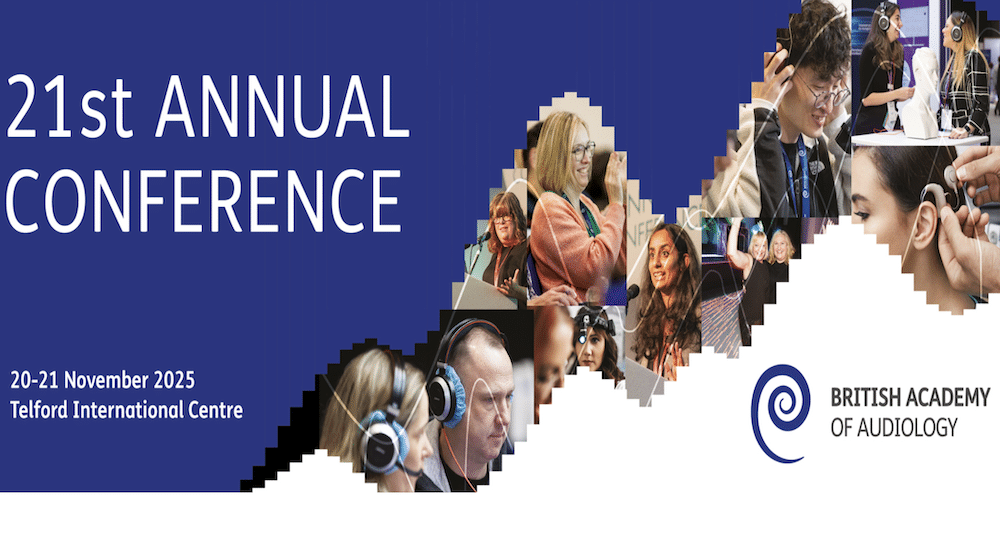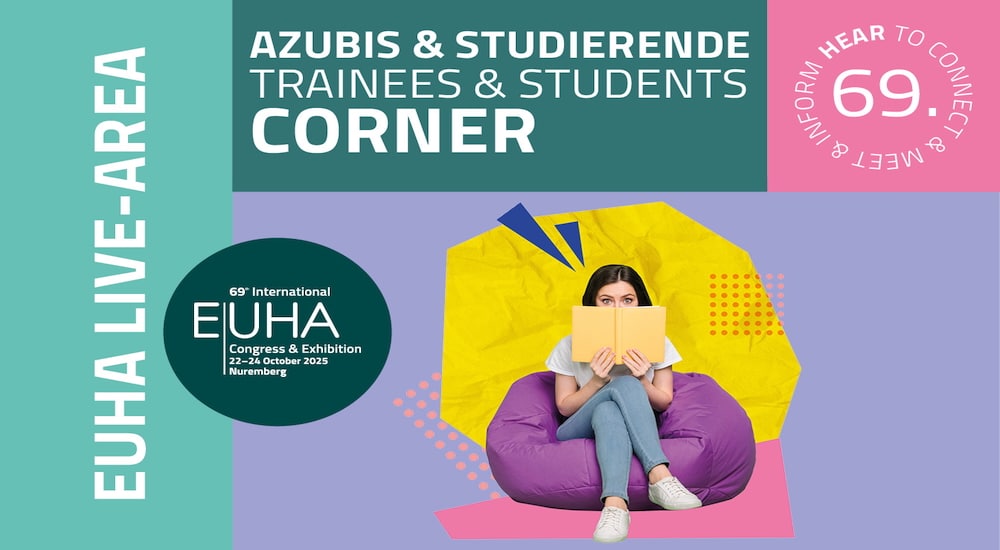16th Congress of the Mediterranean Society of Otology and Audiology
Report
The 16th Congress of the Mediterranean Society of Otology and Audiology (MSOA) took place from May 13 to 16, 2018, in Jerusalem, Israel.

It attracted more than 400 participants from all five continents, and so far beyond the limits of the Mediterranean region. The organizers offered what proved to be a successful program covering all areas of audiology and otology through academic readings, round tables, symposia and open communications. Here is our report.
Cochlear implant: state of play and perspectives
A number of papers focused on cochlear implantation: indications; adjustment modalities, and how to improve their precision and duration; as well as on auditory brainstem implant (ABI), in particular the evolution of the need for this in children.
During a plenary session, Robert Briggs (Australia) reported his experience and perspectives in this matter. Because this form of treatment is indicated for children with profound deafness diagnosed through new-born hearing screening, it is often formalized during the child’s first year, by means of a radiological exam with an MRI without a systematic scanner. This exam allows for a detailed assessment of the cochlear anatomy to identify possible malformations and to confirm the presence of cochlear nerves. In general terms, indications for cochlear implantation, whether bilateral, simultaneous or sequential, are on the rise. In children, the benefits of this “early age” implantation strategy, particularly in terms of schooling, have already been proven.
As for unilateral deafness, combined with tinnitus, studies have shown that the benefit of cochlear implantation varies from one patient to another, with no correlation between hearing tests and satisfaction surveys. Technological advances are being made in different directions: multipolar signal processing strategies at the level of the electrodes to improve spectral resolution; wireless connectivity of the processer with adjustment software to improve adjustments in children; and connectivity with different communication means –phone, television, etc.—; and the development of increasingly thin electrodes to optimise the preservation of hearing with electric and acoustic stimulation for the same ear: Electric Acoustic Stimulation implants (EAS).
Electrodes designed to deliver pharmacologic agents secondarily, post implantation, have also been developed. For seniors, numerous studies have already demonstrated the benefits of cochlear implantation for hearing rehabilitation, but also the positive effect of cochlear implants to prevent age-related cognitive decline. Lastly, he underlined that while “fully implantable” cochlear implants have been developed and used in some clinical studies, to date there is not sufficient evidence to support the widespread use of these devices.
Middle ear disorders
The papers presented by the team of the A. de Rothschild Foundation (France) covered the different ontological diseases and the contributions of imaging. Chloé Abitbol presented a series of five cases of chronic otitis media with cholesteatoma, a situation which is less common than fistula of the lateral semicircular canal. The difficulty resides in establishing the diagnosis: in the absence of specific symptoms, pre-operatory imaging is necessary when surgery is recommended due to the risks of postoperative total deafness. Mary Daval (France) presented a retrospective study of eight cases of isolated malleus handle fracture. The symptomatology associates hearing loss and aural fullness. Diagnosis should be established based on the following: provoked by a traumatic incident; very often digital manipulation of the external auditory canal; or on occasions, from microscopic examination; movement of the malleus handle during a Valsalva manoeuvre, conductive or mixed hearing loss –moderate or mild—; and most importantly, fracture reconstructions evidenced in CT scans and the shifting of the malleus. Surgical treatment, which was carried out in six patients, offered hearing improvement after cartilage interposition or using bone reconstruction material (hydroxyapatite).
The treatment of Menière’s disease
There is no unanimous consensus on the means which should be used for the treatment of this condition. In general, most speakers during the roundtable dedicated to this topic use two or three successive therapeutic stages. The first is a medical treatment based on the reduction of sodium intake in conjunction with medical therapy, usually Betahistine or a diuretic. Should this not be efficient, the second stage differs depending on patient profile and country practices.
For the last 15 years, Maurizio Barbara (Italy) has been using pressure treatment, with a low-pressure generator system with a nozzle placed at the level of the external auditory canal: the Meniett device. The action mechanisms of this device are controversial: does it increase the oxygen pressure in the middle ear? Does it modify the endolymph flow? Does it act at the level of the baroreceptor of the middle ear? However, his clinical outcomes have been satisfactory in reducing hearing and vestibular symptoms in patients with the condition; and in his experience, this also considerably reduced the need for vestibular neurotomy, taking into account that, on principle, he does not perform chemical labyrinthectomies.
Sergio Carmona (Argentina) insisted on two points: the importance of taking into account the comorbidities associated with Meniere’s disease, particularly migraines; and of having a protocol for chemical labyrinthectomy which limits hearing risks by determining the minimum effective dose which, in his experience, should be no higher than two injections, spaced several weeks apart.On this topic, Marco Mandala (Italy) presented a study comparing three types of treatment: Betahistine administered orally; Gentamycin administered locally; and the association of Dexamethasone and Gentamycin administered locally. After one year, no significant difference was observed between the different therapeutic modalities in terms of controlling vertigo attacks. However, it was observed that hearing loss was slightly more pronounced in the group which received only Gentamycin.
Along similar lines, Robert Gurkov (Germany) also proposes the combined use of Dexamethasone and Gentamycin in order to reduce the risk of hearing loss. He also presented a study comparing different dosage regimens of Betahistine and a placebo: no difference in effectiveness was observed.Michael Ruckenstein (USA) added to the discussion on the placebo effect by demonstrating that, ultimately, it plays an essential role, as has been demonstrated in numerous meta-analyses, whether talking about medication or other procedures. Therefore, on a regular basis and after prior individual assessment of the symptoms and their impact, he uses a treatment combining a low sodium diet and a diuretic. However, he insisted on the fact that treatment must be more “aggressive” with different medical treatments in bilateral forms, due to the considerable hearing stake.
Xavier Dubernard (France) presented the findings of the team of André Chays, regarding vestibular neurotomy for uncontrolled forms of the disease and/or combined with Tumarkin’s Otolithic Crises. The study included 157 patients, and demonstrated efficiency on reducing vertigo in 90 % of patients, an effect which was still present ten years later for the 31 patients who were still being monitored after this period of time.
Source: Audiology Infos France


